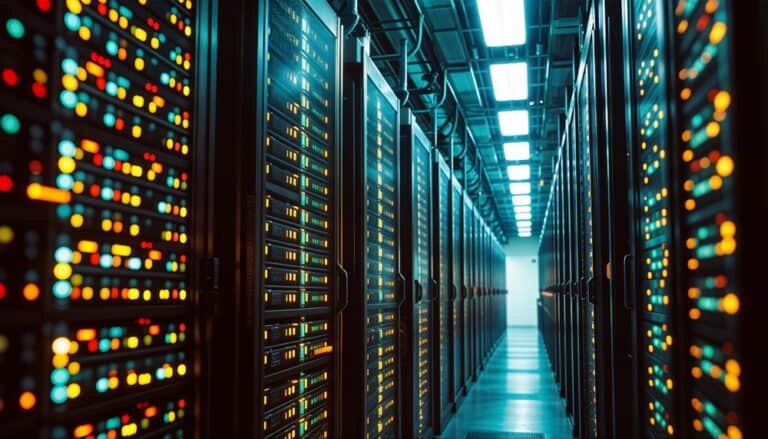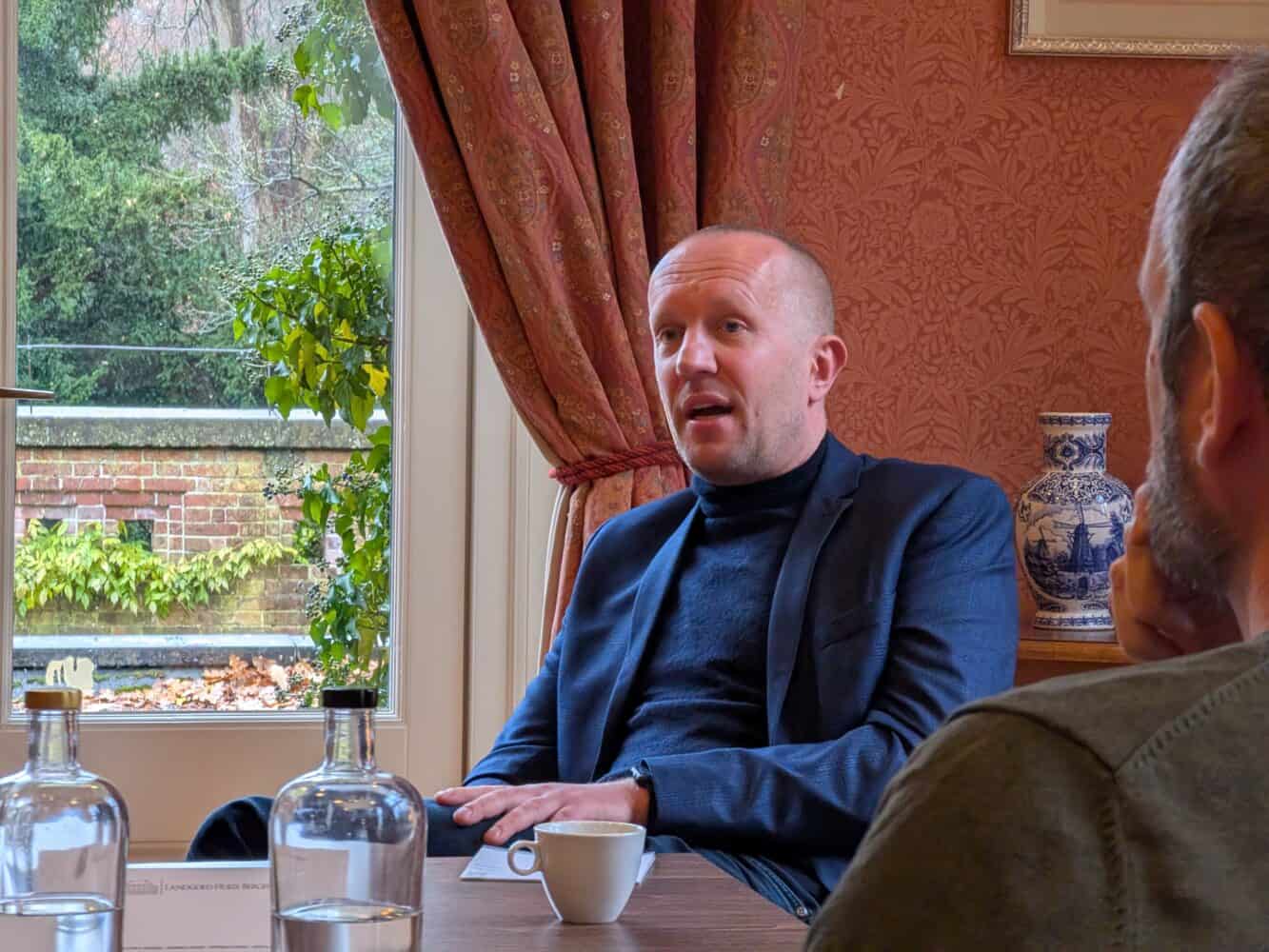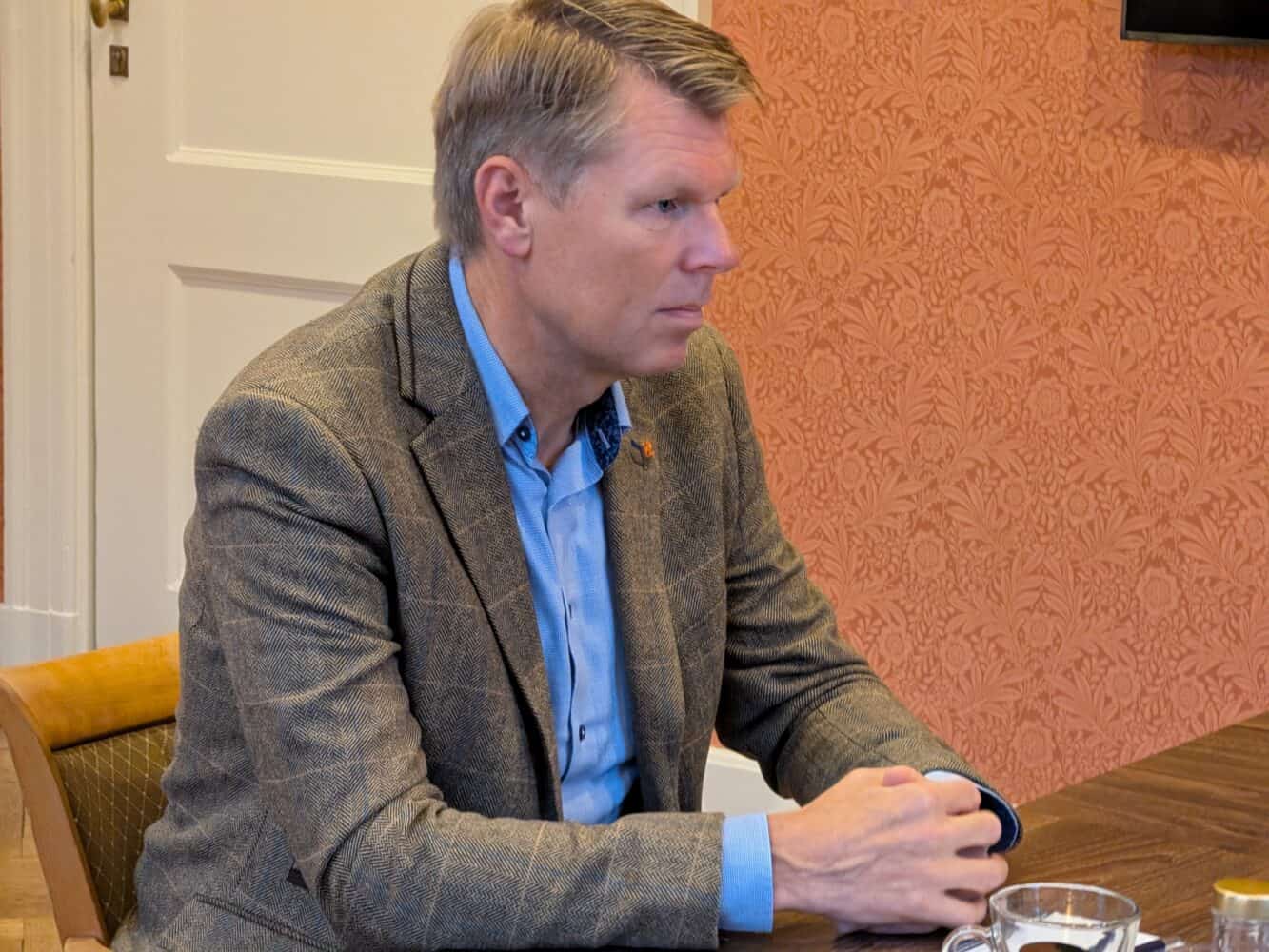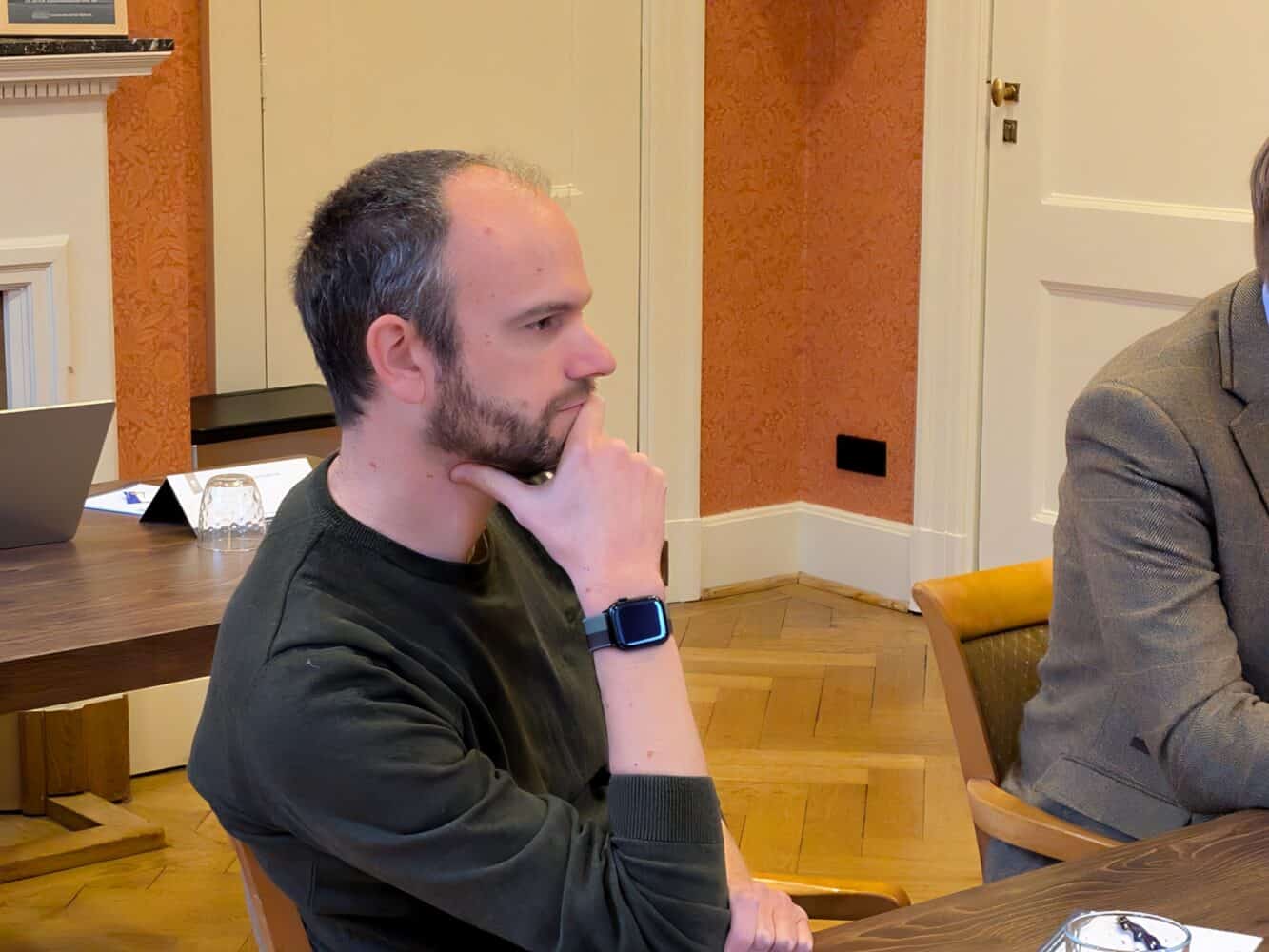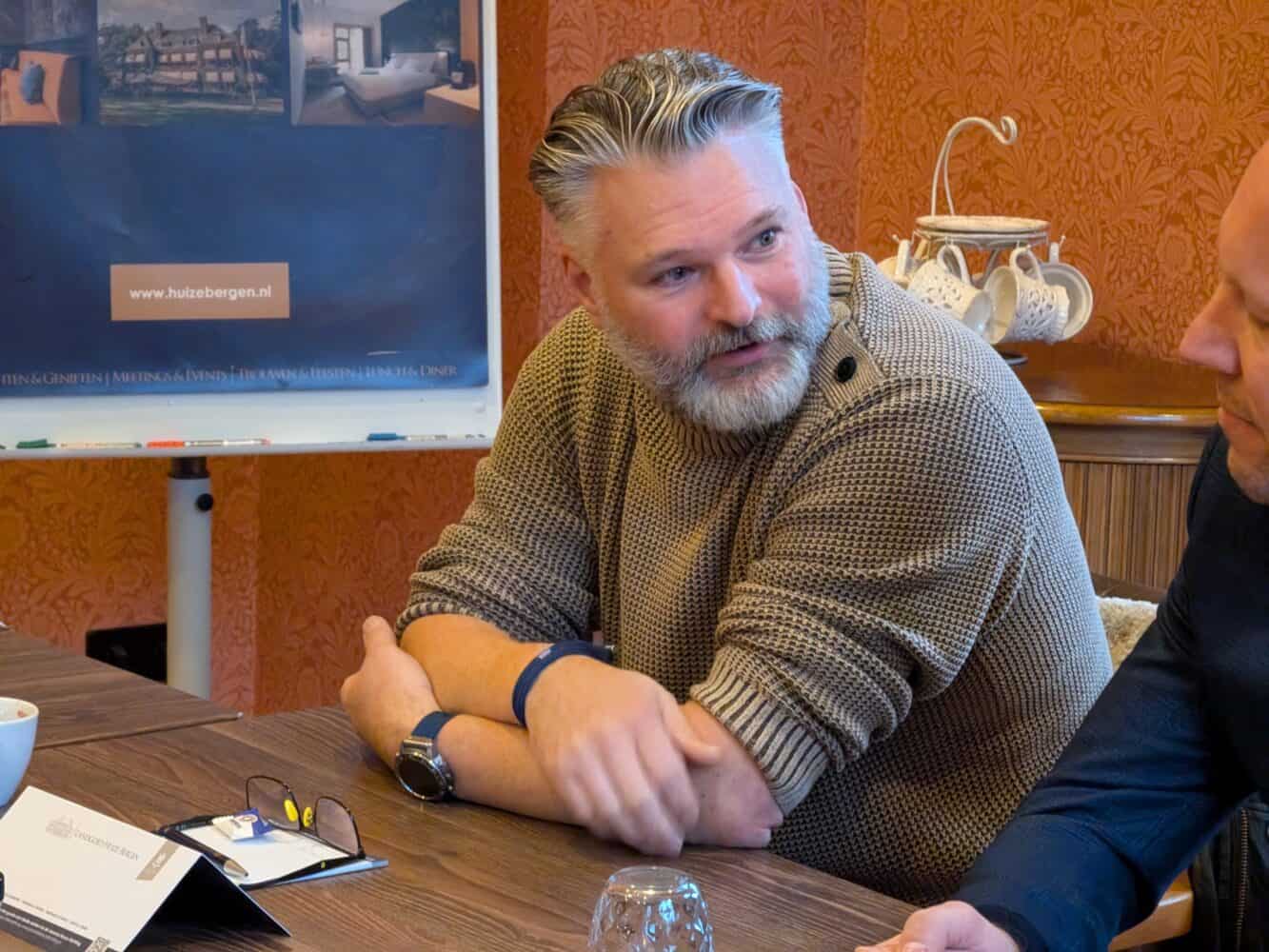Society tends to treat data centers as energy guzzlers to the extreme. However, data centers bring together parties that consider sustainability paramount. What is the state of affairs on this topic? How sustainable are data centers really? We discuss it in a roundtable discussion with experts from Dell Technologies, Eurofiber, NorthC Datacenters and Schneider Electric.
At its core, a data center is already more sustainable than the alternative of the past, which is managing your own on-prem infrastructure. Today, these hardware resources are pooled together to avoid needless duplication. Jan Bonke, Business Innovation Officer at Eurofiber Netherlands, talks about IT moving away from office “broom closets” and into the data center. In Bonke’s previous position, he operated six data centers. He sees that clients use different methods to manage their IT nowadays. Some have all their hardware managed by someone else, while “plenty of clients” still manage the servers themselves. Nevertheless, in all cases, Eurofiber provides the connectivity as the data center operator.
Ronald van den Bosch, Group Director Projects at NorthC Datacenters, sees that the migration from on-prem to data centers has already led to the adoption of other standards. “Virtualization is just common sense nowadays,” he points out. There are many additional benefits to using a software layer on top of hardware, which we’ll return to later. But first, we look at what “sustainability” is often socially synonymous with: ecological care and, thus, minimization of resource usage.
Less consumption, more intelligent consumption
After the IT equipment itself, the cooling infrastructure required by it is the biggest energy consumer. Van den Bosch notes that cooling represents 20 percent of total consumption. But as Loek Wilden, Offer Manager Secure Power BeNe at Schneider Electric, cites, the most ecological temperature is not necessarily the maximum operating temperature. In 2009, for example, research by Dell Technologies already showed that the sweet spot for minimal overall energy consumption is between 24 and 27 degrees Celsius. Wilden explains that if one were to choose a higher temperature, one typically consumes more energy owing to the servers’ fans having to work harder, eliminating the savings made by sticking to a higher internal temperature.
Ruud Mulder, Country Pre-sales & Solutions Architecture Manager Netherlands at Dell Technologies, emphasizes hardware vendor designs’ pivotal role in this process. For example, Dell focuses its cooling on the components that need it most rather than taking a more generic approach. Already anticipating a future of GPU-filled data centers, Mulder says that “those [GPUs] need a lot more power and cooling than a regular CPU.”
Van den Bosch of NorthC Datacenters adds that fully utilizing the cooling capacity of a data center is also not the best way forward. “If we set all cooling systems to 100 percent, that’s also anything but ecologically sustainable. In a data center, we pay a lot of attention to finding the optimal set points to achieve the highest energy efficiency.” On top of that, the low-hanging fruit has now been picked, says Eurofiber’s Bonke. These days, it’s harder to make sustainability gains.
The key is clear: it’s all about getting to the lowest possible PUE (Power Usage Effectiveness). It is the industry yardstick for organizations within the data center world. The closer PUE is to 1, the better. 1 represents the total consumption of all IT resources. If all that consumption is converted to compute, we have a PUE of 1.
In practice, however, a PUE of 1 is almost impossible to achieve because energy is also needed for cooling and other things. For example, NorthC Datacenters is designing new data centers with a PUE of 1.2, as we heard recently. AWS announced a few weeks ago that their PUE averages 1.15 and that it even has a site that achieves 1.04. By the way, it’s not always clear to us if everyone’s measuring in quite the same ways. But that’s a topic for another time.
The benefits are hard to spot, but they’re there
The emphasis on frugality sometimes puts vendors in a bind. “You don’t know exactly what a customer is doing in their rack,” Bonke says. “But you have to justify it to the authorities.” For example, data center providers have to convert alternating current (AC) to direct current (DC) more than once and vice versa. This leads to unnecessary waste. Bonke: “We also don’t own the equipment. Maybe the customer is using Eco mode, but we can’t enforce that.”
Also read: Microsoft shows off water-saving design for data centers
Moreover: clients buy a specific capacity from Eurofiber, which the company cannot re-deploy if the actual consumption ends up being smaller. “A client may say it needs 6 kW of power, but later, it turns out that about 2 kW was sufficient. We can’t make that extra power capacity available again.” This creates theoretical congestion rather than a real gridlock, Bonke states. This is a problem that Mulder also addresses. “I see customers stepping in at way too big a size,” he says. For example, he thinks the five-year buy-in that clients are used to when it comes to hardware is outdated. On top of that, they only perform the proverbial road test of all IT resources when it is time to buy new stuff.
Van den Bosch also sees limited scope for this kind of conversation. “You can show customers how much they actually use, which is hopefully a trigger for action. There are also parties where NorthC provides the IT environment together with partners to a customer. You can have good conversations with those clients because there is more openness.” He emphasizes that customers certainly look at their footprint on the climate and their consumption. Some are even stricter on themselves than legislation dictates.
Legislation already pushes the industry in the right direction. But new laws also lead to more questions, Wilden notes. “Legislation is complex stuff that, as a small organization, you can’t write out in your RFP. What does it mean when you put in your tender that the proposals have to be sustainable?” Data center providers will be more aware of such issues.
In effect, the relationship between the customer and vendor still seems more straightforward than would be ideal. “A faster hardware replacement cycle is a tough topic to discuss,” Mulder says. “But you have to look at the costs over those five years.” The conclusion might be that you need to replace your hardware much sooner with more efficient models thanks to their many efficiency advantages. “Nevertheless, you have to go deep into the software layer to figure out which part in the IT chain is causing problems.” The translation to the customer is still a challenge, but Mulder has a suggestion. “We can tell you what you stand to gain from an upgrade, explained in the number of extra miles you can drive a car because you saved resources elsewhere.”
Every man for himself
It has quickly become apparent that sustainability goes beyond reducing consumption. All the experts, therefore, describe it as an issue where one has to treat data centers holistically. This still happens too little, a conclusion which the roundtable discussion repeatedly leads us to. For example, Wilden of Schneider Electric claims that consumption monitoring is used reactively. “The motivation is: is something strange happening in the infrastructure?” First, he believes the industry needs to take preventive action. Wilden says that new stance won’t work with one system that can do everything. “That’s an illusion. You need one layer of governance that keeps the overview and multiple systems that keep an eye on a specific thing.”
“At the end of the day, the IT world is incredibly conservative. We actually still build data centers the same way we did 20 years ago,” Wilden continues.
Performance gains in this area revolve around affecting PUE beyond the decimal point, Van den Bosch argues. But, “Less attention, also in legislation, is being given to the energy efficiency of IT equipment itself,” he says. How can you ensure improvement in that area? Mulder: “Data is the biggest polluter of the data center. That’s independent of the hardware, it’s about poorly written, monolithic applications and databases.” Because parties now operate “each for themselves,” Mulder says, sustainability cannot be optimally addressed.
Mulder continues: “Apart from the quality of programming code, attention must be paid to the specific use case. Squeezing energy also leads to slower workloads. That is not an option for everyone because a municipality has very different requirements and tolerance for downtime than a webstore.”
There’s a lot you can do, even if you don’t know it yet
Up to this point, we have treated “the data center” as a given. The reality is that there are big differences between colocations and hyperscalers’ data centers, for example. Best practices that are already commonplace at AWS, Azure, or Google Cloud have not yet been adopted elsewhere. Wilden mentions the linking of building systems with the orchestration layer for IT resources. From that, trends are emerging that, with the help of AI, are already leading to 20-30 percent energy savings. “What the hyperscalers are doing, we need to make commonplace. We need to do that together.”
This drive for efficiency gains before the decimal point makes sense. Yet right now, that has to come from the customer, notes Bonke. “If you apply pressure as a vendor, the customer soon refuses to cooperate.” Consider moving away from the five-year cycle for hardware replacement. “If you buy additional capacity after a year or two, you have the advantage of also using the latest, more efficient hardware,” Van den Bosch says.
Mulder describes the best way forward as a “phased scaling up,” which “should not be in a straightjacket.” “That also depends on the architectural principles you adopt. You have to be able to build modularly.” That goes back to the days of 3-tier on-prem IT resources. Now, it’s all about composable IT infrastructures. Or, as Mulder outlines in a current example, “You need to be able to add a big stack of GPUs as-a-Service to your IT infrastructure on the fly.”
Conclusion: there’s so much to gain, but how?
A discussion of sustainability in the here and now cannot ignore the future. We will focus on that more in a future article. The experts from Dell Technologies, Eurofiber, NorthC Datacenters and Schneider Electric have more to add in that regard. For example, what is the ideal size of the data center of the future? What impact does the trend toward the edge have, and isn’t hybrid cloud the optimal mode of operation for most organizations? This and more questions will follow later.
Collaboration in the IT industry is the key to sustainability. The will is certainly there, although organizing partnerships is something all parties can still take steps in. Customers therefore need to be enthused, says Bonke of Eurofiber. The data center business is full of innovation, driven both by suppliers and by customers. Public opinion may eventually come around, because if you look at the developments, you will see an industry that is actually paying close attention to sustainability.
